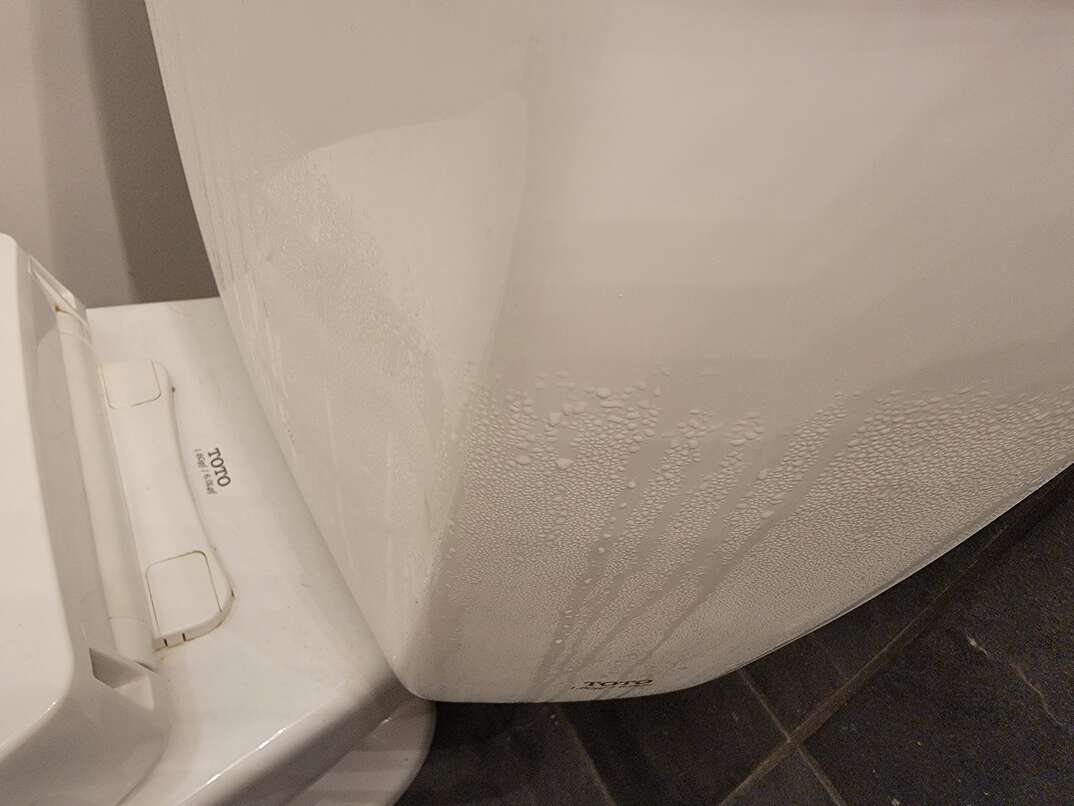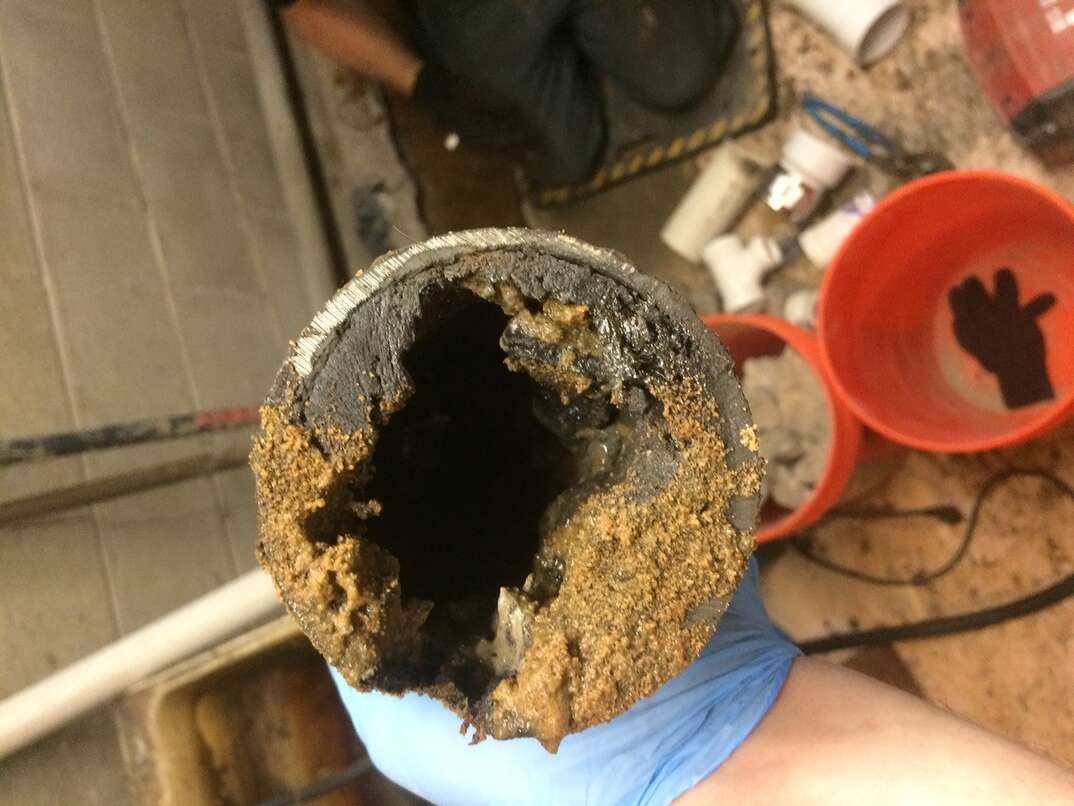Condensation on Your Toilet? Don't Sweat It

Is your toilet breaking a sweat? The condensation may concerning. Finding water dripping from the tank and gathering on the floor can bring to mind leaks and other worse plumbing issues — and no one wants to deal with that. The good news? There's no need for you to sweat, too: Condensation on the toilet tank doesn't necessarily point to anything wrong, but rather some basic science happening in your bathroom.
This May Also Interest You: 6 Common Reasons Why Your Toilet Won’t Flush
Here’s what’s up with your perspiring toilet and what you can do about it.
Why Is Your Toilet Tank Sweating?
Toilet condensation occurs for the same reason droplets form on the outside of your ice-cold soda or beer can when you're grilling in the backyard. The water inside the tank is colder than the air outside of it. That causes moisture to be pulled out of the air and gather on the toilet tank.
Is Condensation on Your Toilet Tank Bad?
On its own, toilet sweating isn't an issue. However, it can be an annoyance and lead to other issues.
Water constantly dripping off your toilet and onto the floor can lead to damp areas that may foster mold and bacteria. To keep anything from growing back there, you’ll need to frequently clean the hard-to-reach floor behind and beside the toilet. Depending on your flooring and bathroom structure, all that moisture may lead to long-term issues, including mold growth you can't see, rot or weakening of the floor.
How to Stop Your Toilet From Sweating
Thankfully, this is one of the easiest toilet-related problems to fix. Here are three things you can try to reduce condensation on your toilet tank:
Reduce Moisture
Water can only be pulled out of the air if it's there to begin with. Keep windows and doors open whenever possible to air out the bathroom, especially after long baths and showers. Use an exhaust fan for the same purpose. Take a few moments to dry off shower walls and doors after taking a shower to reduce latent moisture in the room. If moisture is still excessive, add a dehumidifier to the space.
More Related Articles:
- How to Fix a Running Toilet
- How to Unclog a Toilet with 4 Easy Methods
- What’ll a New Toilet Do to Your Bottom Line? Here’s What It Costs
- How to Properly Clean Your Toilet in 4 Steps … and Don’t Forget No. 2!
- How to Use a Drain Snake and Unclog Your Toilet
Warm It Up
You may need to keep the temperature of the water in the toilet and tank closer to that of the surrounding air. Invest in an insulation kit, a tank cover or an anti-sweat valve to reduce the temperature of the toilet itself or the water in your tank. If the temperature of your tank is about equal to the temperature of the air in the room, the toilet tank is less likely to sweat.
Get a Drip Tray
Install a drip tray. This is potentially the easiest and cheapest fix, though it doesn't solve the sweat problems. It does, however, keep the moisture off the floor.
Drip trays sit under the toilet tank and catch condensation water as it falls off the toilet. You'll have to empty the tray regularly, but it's probably a lot less work than getting behind the toilet every day to sop up moisture. A tray also reduces the impact of water on the structure of your floor.
What If It's More Than Your Toilet Sweating?
If you find a puddle of water near the toilet and the floor was dry moments before — or the toilet isn't damp at all — you may be dealing with a plumbing problem. Call a plumber.
Serious issues with plumbing can be stressful and expensive, so being prepared for unexpected home repairs with a plan from HomeServe is important. Having a plan in place gives you peace of mind knowing that you can simply call our 24/7 repair hotline for covered breakdowns. See what plans are available in your area.


